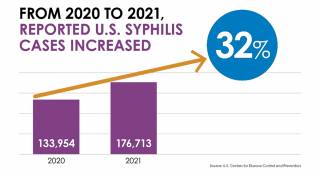Can HIV Medications Cause Microcephaly?

According to a new Harvard study, children born to women on human immunodeficiency virus (HIV) therapy containing the drug efavirenz were 2 to 2.5 times more likely to have microcephaly.
And, children born with microcephaly in this study scored lower on standardized tests of child development at ages 1 and 5 years.
The study’s analysis was conducted by Paige L. Williams, Ph.D., of the Harvard T.H. Chan School of Public Health, and colleagues, and was published in The Lancet on November 15, 2019.
“Our findings underlie the importance of having alternatives to combination therapy with efavirenz for pregnant women with HIV,” said study author Rohan Hazra, M.D., chief of the Maternal and Pediatric Infectious Disease Branch of NIH’s Eunice Kennedy Shriver National Institute of Child Health and Human Development, which provided funding for the study.
Researchers analyzed data from a follow-up study of 3,055 infants born to women on HIV therapy during pregnancy. In this earlier study, the children’s head circumferences were measured periodically from 6 months of age through 5 to 7 years of age.
Of the 141 children exposed to efavirenz in the womb, 14 (9.9%) had microcephaly, compared to 142 of 2,842 who were not exposed to efavirenz (5%).
This prospective cohort study between March 21, 2007, and Aug 1, 2017, was done by the Pediatric HIV/AIDS Cohort Study network. Microcephaly was defined as having a head circumference Z score <–2 according to the 2000 CDC growth charts for children 6–36 months old and according to Nellhaus standards after 36 months (SMARTT).
These associations were more pronounced in children exposed to combination regimens of efavirenz that included zidovudine plus lamivudine than those including tenofovir plus emtricitabine. Protective associations were observed for darunavir exposure.
In adjusted models, in utero exposure to efavirenz was associated with increased risk of microcephaly by both Nellhaus standards and SMARTT criteria.
Children who are HIV-exposed, but uninfected with microcephaly, had lower mean scores on neurodevelopmental assessments at age 1 and 5 years, and a higher prevalence of neurodevelopmental impairment than those without microcephaly.
And, Modified Poisson regression models were fit to obtain relative risks for associations between in utero antiretroviral exposure and microcephaly status, adjusted for potential confounders. Neurodevelopmental functioning was compared in children who are HIV-exposed, but uninfected with or without microcephaly.
The good news is these researchers noted that exposure to all other types of HIV therapies was ‘not associated with a higher risk of microcephaly.’
Microcephaly is not a common condition and is often related to Zika virus cases. A Zika infection during pregnancy increases the chances for the infant to have microcephaly.
Microcephaly can be an isolated condition, meaning that it can occur with no other major birth defects, or it can occur in combination with other major birth defects.
Current frequency estimates are that microcephaly ranges from 2 babies per 10,000 live births to about 12 babies per 10,000 live births in the USA, says the Centers for Disease Control and Prevention (CDC).
Microcephaly can be diagnosed during pregnancy or after the baby is born. During pregnancy, microcephaly can sometimes be diagnosed with an ultrasound test.
To diagnose microcephaly after birth, a healthcare provider will measure the distance around a newborn baby’s head, also called the head circumference, during a physical exam.
To see the impact of microcephaly during pregnancy, the ultrasound test should be done late in the 2nd trimester or early in the 3rd trimester.
Severe microcephaly is a more serious, extreme form of this condition where a baby’s head is much smaller than expected. Severe microcephaly can result because a baby’s brain has not developed properly during pregnancy, or the brain started to develop correctly and then was damaged at some point during pregnancy, says the CDC.
Additional funding for the study was provided by the National Institute on Drug Abuse, National Institute of Allergy and Infectious Diseases, NIH Office of AIDS Research, National Institute of Mental Health, National Institute of Neurological Disorders and Stroke, National Institute on Deafness and Other Communication Disorders, National Institute of Dental and Craniofacial Research, and National Institute on Alcohol Abuse and Alcoholism.
No conflicts of interest were disclosed by these researchers.
HIV news published by Precision Vaccinations.
Update: Inserted relative link.
Our Trust Standards: Medical Advisory Committee

























